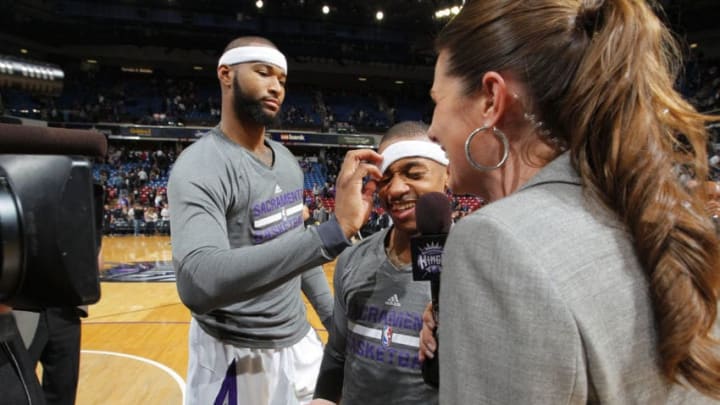DeMarcus Cousins, Isaiah Thomas and the injuries that bind them together

In many ways, the careers of Isaiah Thomas and DeMarcus Cousins have always been linked. Five years ago they were teammates in Sacramento before the crossroads of internal politics and a desire to be paid what one deserves tore them away. Two seasons ago they faced off against each other in the All-Star game. Today, Thomas and Cousins once again find themselves at a crossroads in their careers, though this time it has less due to money and politics and more to do with their bodies failing them.
Thomas, who signed a minimum level contract with the Denver Nuggets this summer, and Cousins, who signed with the defending champion Golden State Warriors for the taxpayer mid-level exception, will be under contract next season for a combined $7.3 million after each suffered potentially (perhaps potentially isn’t necessary here) career-altering injuries in the not so distant past. For reference, that’s nearly $10 million less than what they made together during their final year together in Sacramento when Boogie was an All-Star and Thomas one in the making.
Cousins suffered a grade 3 Achilles tendon strain (often referred to as a rupture) during the final minute of a late January game against the Houston Rockets this past season whereas Thomas is still trying to completely recover from a hip labrum tear suffered during the 2016-17 season. Thomas finally went under the knife on March 29, 2018.
Read More: Marcus Smart’s defense is a necessity for Celtics
Achilles tendon ruptures are nothing to mess with, regardless of a player’s size or athletic predispositions. What’s makes these injuries so debilitating, so career altering, is that they’re nearly impossible to completely recover from.
The elastic, power storing and producing properties of the tendon become irrevocably altered once a rupture occurs, even if it is surgically repaired. The new tissue that is laid down in the recovery process simply can’t contract as forcefully or maintain the same endurance compared to when it was healthy. The end result: a player who can’t run as fast, jump as high, or cut as quickly. These unfortunate manifestations are often subtle in the sense that the player can still be a productive on-court presence but obvious in that things just aren’t quite the same as they used to be.
Thomas’ injury is drastically different than Cousins’, even if the end results are more or less the same in terms of the on-court product.
Hip impingement syndrome is a condition in which the bony structure of the hip — where the “ball” of the femur meets the “socket” of the hip — pinches the soft tissues present due to being misshapen. Labral tears — the labrum is a thick cartilaginous disc that lines the hip socket — are a common result.
Small tears of the labrum are actually common occurrences not only in athletes but non-athletes as well. The general wear and tear of everyday life expose the soft tissues of the body to forces that often lead to disruption. Magnify the wear and tear by being involved in a high impact, repetitive sport such as professional basketball and it’s easy to see how such an injury may occur. Small tears are often not a problem. Larger tears, however, such as the one incurred by Thomas, can be troublesome injuries.
Large labrum tears are notoriously painful and often limit a player’s range of motion and strength. Although the injury can be treated surgically, either by being sewn together or excised (the details as to which procedure is most appropriate is for another article), that doesn’t necessarily guarantee a full recovery.
Sewing the labrum together requires a long, arduous recovery process as it takes quite a bit of time for the tissue to heal; cutting out the tear exposes the hip to an increased risk for bone bruises and arthritis due to the decreased cushioning after removal of the tissue. In the world of professional sports where millions of dollars are at stake every single game, selecting the proper road of treatment can be like choosing between a rock and a hard place.
The return of Thomas and Boogie, the former teammates on the court and current teammates in the battle against the imperfections of the human body, will be one of the more captivating and intriguing storylines next season. It’s not farfetched to say that how both players bounce back from their injuries this upcoming season will determine their futures in the NBA.
Next: Where do the Raptors rank in a post-LeBron East?
Both players are looking to regain not only confidence but legitimacy, which is no small feat in a league that is generally wary of using limited resources on “damaged goods” and very much what-have-you-done-for-me-lately. If either can prove that they are back to at least 90 percent of what they used to be they’ll be in line for a bigger payday during the captastic summer of 2019. If not, well, who knows what the future may hold.